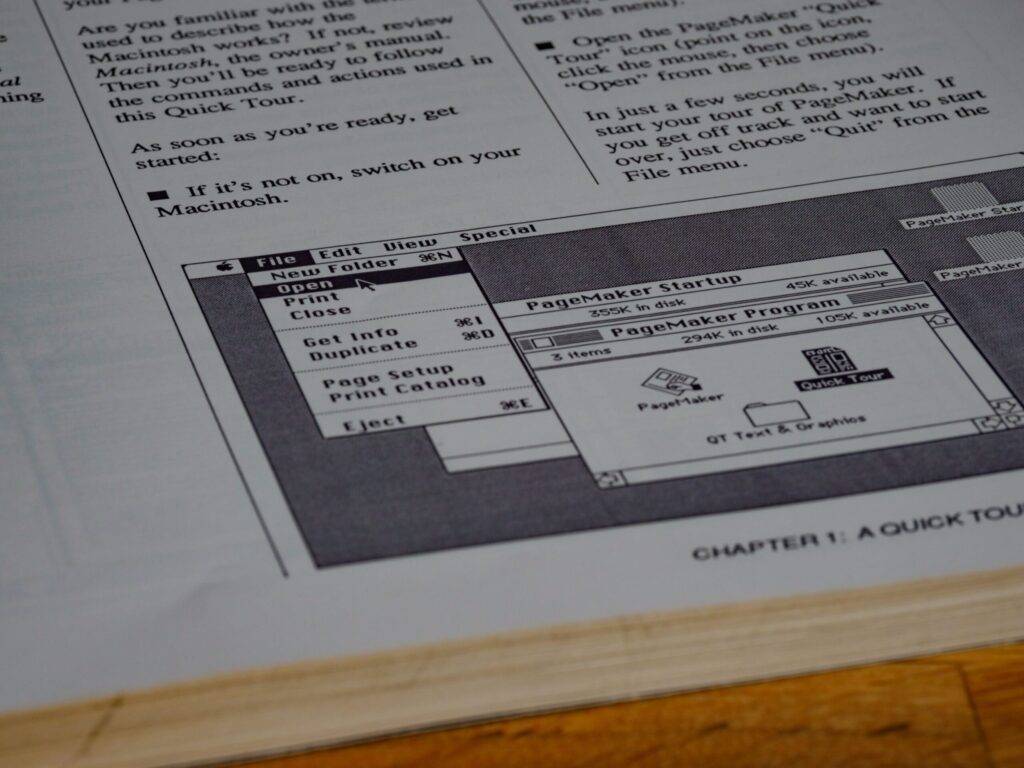What is a Technical Document?
A technical document is defined as any type of writing, print or web-based, that helps the reader understand the how, what, when, where, and why of a product or service. In other words, it is a form of informative writing that helps the reader understand a product or service in whatever way they need to in order to accomplish a determined task.
What is Technical Documentation?
Technical documentation is the comprehensive and structured compilation of information related to a product, system, process, or technology. It communicates complex technical details in a clear and understandable way for a specific audience, which may include end-users, developers, or internal stakeholders. This type of documentation typically includes user manuals, installation guides, API documentation, technical specifications, and troubleshooting guides. Well-crafted technical documentation plays a crucial role in ensuring efficient operations, promoting product usability, and facilitating knowledge transfer within an organization.
Technical documentation is critical to the success of a business’s internal operations. Two prime examples of how it promotes successful business operations are Knowledge Transfer & Continuity and Error Reduction and Efficiency.
Technical documentation plays a vital role in helping businesses across various industries. It serves as a comprehensive and structured source of information that enables effective communication and collaboration within a company. By documenting essential processes, procedures, and guidelines, technical documentation facilitates knowledge transfer among employees, reducing the dependence on individual expertise and preventing knowledge silos. This ensures continuity and consistency even when employees leave or change roles. Clear and well-organized technical documentation assists in streamlining operations, reducing errors, and improving productivity, ultimately leading to cost savings and increased efficiency.
Common Technical Documents
Now that we’ve answered the question, “What are technical documents?,” it is important to understand the variety within the field of technical documentation. Information Technology professional Nick Groenen says there are four main types of technical documentation: Tutorials, How-to guides, Technical References, and Explanations. Technical documentation can include everyday things such as furniture assembly instructions, directions to your favorite amusement park, and FAQs on a website. The easiest way to decide if a piece of written information is a technical document is if you can say “yes” to any of these questions:
- Does it explain how to use or do something?
- Does it explain features, benefits, methods, or how something was developed?
- Does it explain how something works?
Specific Types of Technical Documents
- User Manuals: Provide instructions on how to use a product or system, offering step-by-step guidance to end-users
- Installation Guides: Detail the setup process for hardware, software, or systems, ensuring proper installation and configuration
- API Documentation: Describes the application programming interface (API) of a software application, guiding developers on how to interact with it
- Technical Specifications: Outline the technical details, requirements, and features of a product or system
- Troubleshooting Guides: Assist users in identifying and resolving common issues or errors that may arise while using a product or system
- White Papers: Present in-depth technical information, research, or analysis on specific topics, often used in marketing or research contexts
- Release Notes: Provide information about the changes, bug fixes, and new features introduced in software updates or new product releases
- Design Documents: Describe the architecture, design, and rationale behind the development of a software application or system
- Policies and Procedures: Outline the rules, guidelines, and standard operating procedures for specific processes within an organization
- Training Manuals: Offer structured materials for training sessions, workshops, or courses, ensuring consistent and effective training of employees or users
Technical Documentation Tools
When it comes to writing technical documentation, having the right tools can be incredibly helpful. Technical documentation software and tools come in various forms, each catering to the specific needs and preferences of documentation creators. Word processors like Microsoft Word or Google Docs are commonly used for basic documentation tasks, offering a familiar interface and formatting options. Markdown editors, such as Visual Studio Code with markdown extensions, provide a lightweight and easy-to-use approach for creating simple, text-based documentation.
For more complex projects, specialized technical documentation tools like Sphinx, Doxygen, or Javadoc are popular choices, especially in software development, which enable the generation of detailed documentation from code comments.
Collaborative platforms like Confluence and SharePoint facilitate team collaboration, allowing multiple contributors to work together on a centralized documentation repository. Screen recording and capture tools, like Camtasia or Snagit, prove invaluable for creating visual tutorials and documentation for software applications through software technical documentation. Finally, version control systems like Git play a crucial role in managing documentation updates and revisions, ensuring accurate and up-to-date information. The choice of documentation tool depends on factors such as project complexity, collaboration needs, and the target audience, and businesses may often employ a combination of these tools to achieve optimal results with their technical documents.
Technical Documentation Writers
Technical documentation writing is a demanding task, requiring a specialized skillset to achieve effective documentation. Qualified individuals who can create technical documentation are those with a strong combination of technical expertise and effective communication skills. Typically, subject matter experts (SMEs) who thoroughly understand the product, system, or process being documented are ideal candidates. They possess in-depth knowledge and experience in the specific field, enabling them to provide accurate and relevant information.
Technical writers are highly qualified for this task, as they specialize in translating complex technical concepts into easily understandable language for a broader audience. These writers have a knack for organizing information clearly and logically, making the documentation user-friendly.
Additionally, individuals with a background in instructional design or information technology can be well-equipped to create technical documentation, as they have the necessary skills to present complex information concisely and systematically. Overall, the qualification to create technical documentation lies in having a deep understanding of the subject matter and the ability to communicate that knowledge effectively to the intended audience.
Benefits Of Good Technical Documentation
Businesses can leverage technical documentation to train new employees efficiently and effectively, accelerating the onboarding process. In customer-facing scenarios, well-crafted documentation enhances the user experience, helping customers understand and utilize products or services effectively, leading to higher customer satisfaction and loyalty. Overall, technical documentation serves as a valuable tool in promoting seamless internal operations and fostering positive relationships with customers, contributing significantly to the success and growth of businesses.
Identifying technical documentation solutions is just the first step, but it opens a world of possibilities. Expert technical writers should create effective technical documentation precisely because they possess the specialized knowledge and skills to communicate complex technical concepts clearly and accurately to diverse audiences, ensuring better comprehension and usability of the information. Additionally, their expertise in organizing, formatting, and structuring content enhances the documentation’s readability and reduces the likelihood of misunderstandings or costly mistakes. Combining the expertise of professional technical writers with the organization benefits of a technical documentation service can clearly show the benefits of tailored technical documentation solutions.
- Why is Documentation Important?
- How to Create Technical Documentation
- Technical Documentation Writers: A Valuable Asset To Software Developers
Whether you need a single technical writer for a brief project or a team of consultants to produce a complete line of documentation, the quality of our work is guaranteed for you. Our clients work closely with an Engagement Manager from one of our 30 local offices for the entire length of your project at no additional cost. Contact us at (800) 221-0093 or [email protected] to get started.



